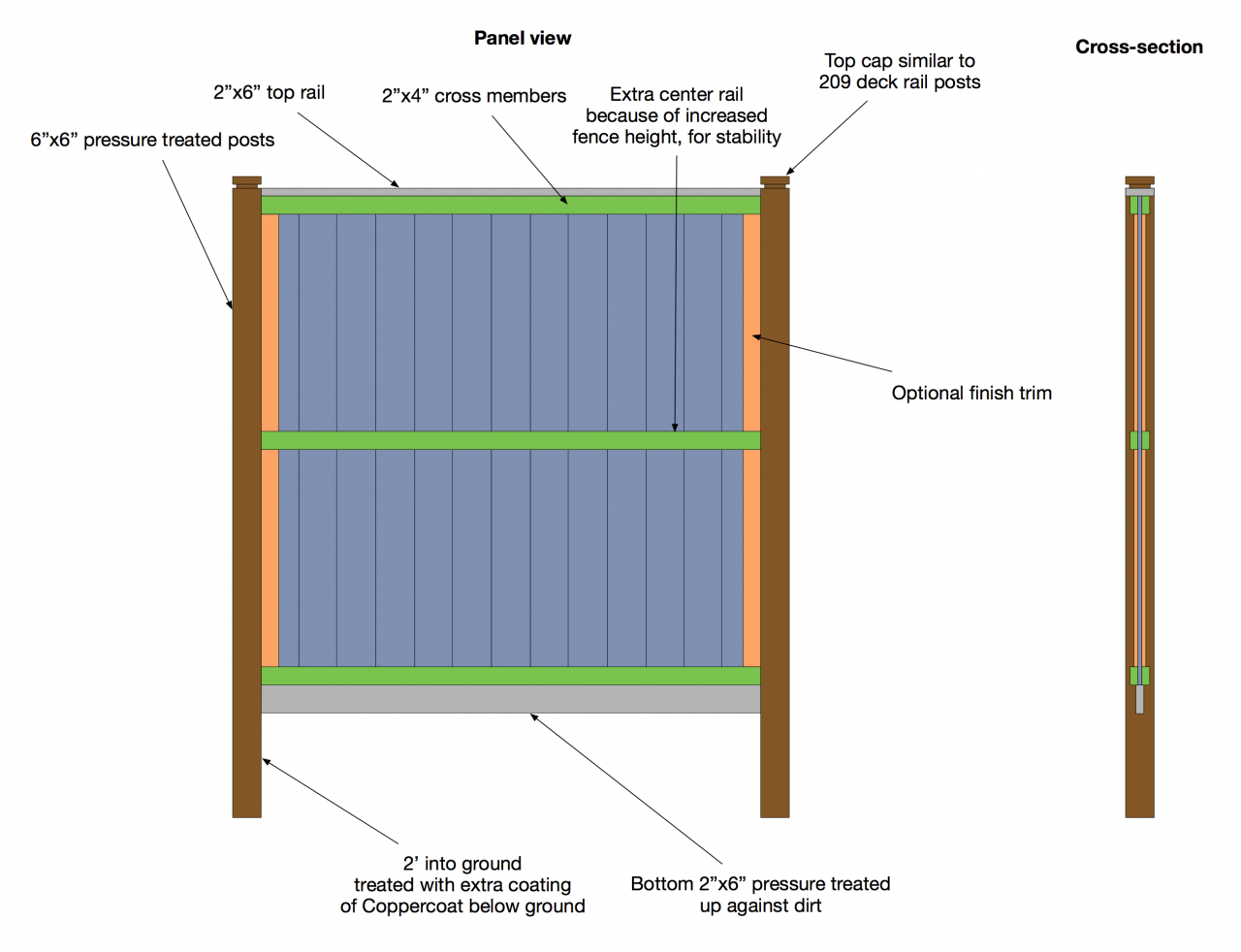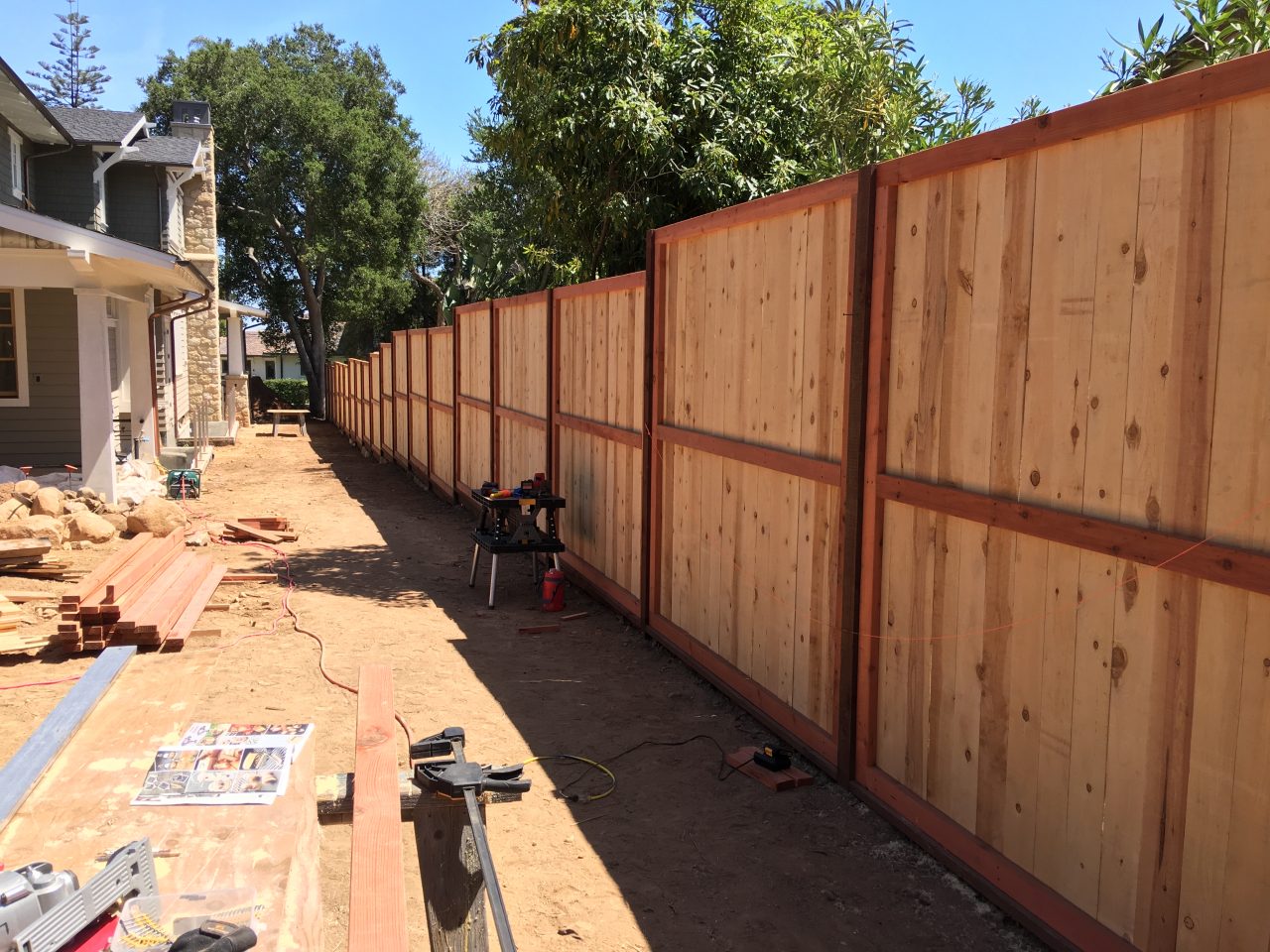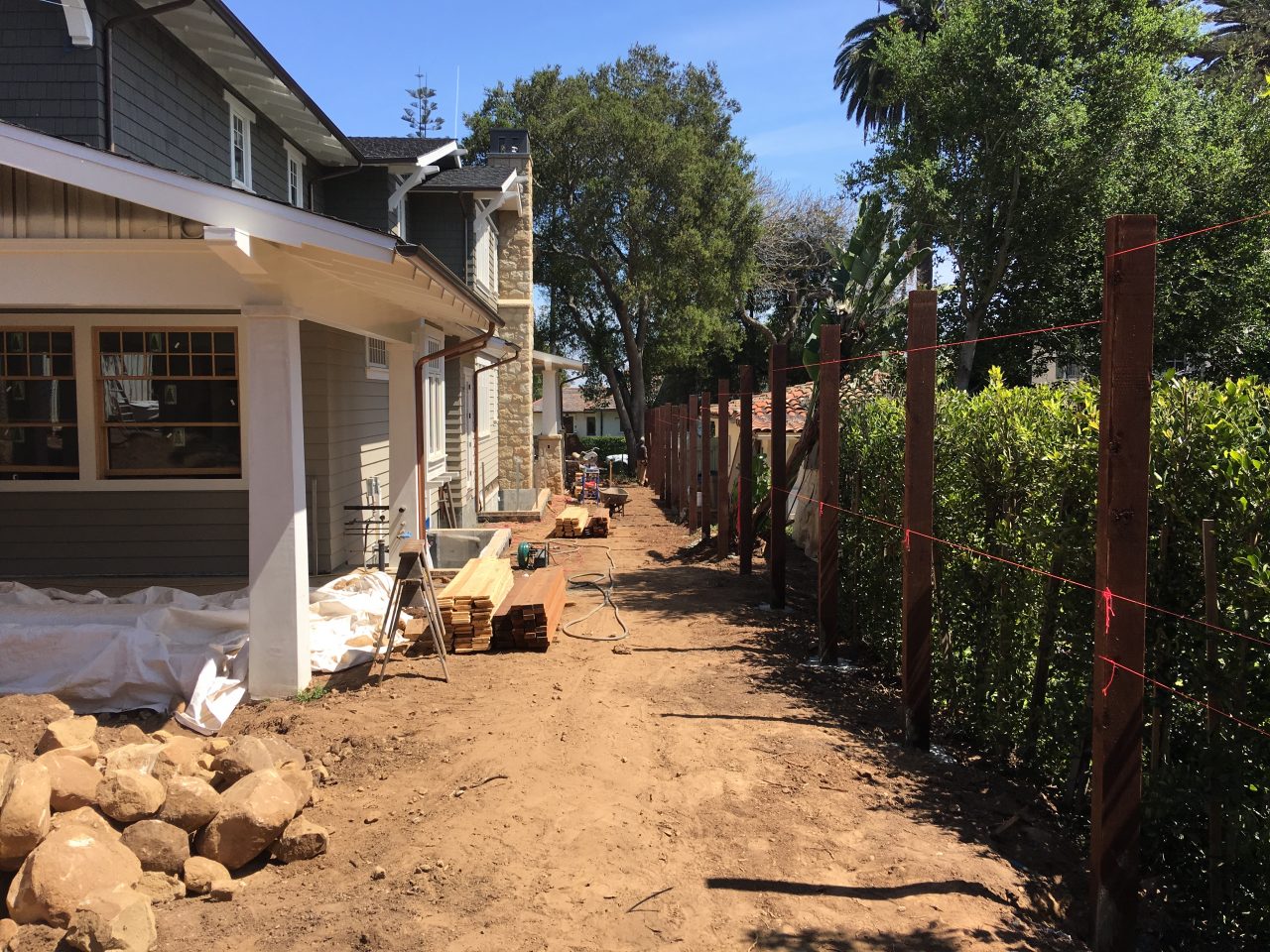Our property borders four different neighboring properties. On one entire side, we teamed up with our neighbords to build a block and plaster retaining wall.
There is a short stretch of the property line where we don’t want to put in a wall with a large footing as it might upset the roots of a very nice oak tree. Instead, we are going to put in a fence. Our neighbors suggested a style they had put in a previous property.

I took the lower portion of the wall and designed something similar, scaled up for an 8 foot size.

We decided to use the design on the other side of our property as well, along the entire length. Our guys have been hard at work on it and it is almost done, and it looks amazing.

The idea was to have something that looked related to the mission style recessed panel cabinet doors we have all over the house. Loosely. The front sections have the top rail and the caps, which make it look even better.

The fence goes along about a 200 foot stretch that rises about 4 or 5 feet over that distance, so we had to plan how to have the fence follow the ground level in a way that made sense and looked good. To do this, we first put all of our posts in, then measured the total drop from one end to the other, and calculated how often (every 3 panels) and how much (11 inches) to raise the level of the next section.
Having a treated 26 bottom rail partially burred in the dirt gives us an easy way to follow the ground where it rises a few inches over each panel, but have the bottom of the fence appear level. In places were we had a gap showing, we used some of the native sandstone to make a small rubble wall.
Here you can see our string layout before we built the panels.

When we got to the section just in front of the house post in the above picture, the ground goes up about 18 inches quite suddenly. We handles that by having to jumps up in successive panels – a bit of a deviation from our orderly pattern, but we have a similar double jump in the wall on the other side, so it makes sense.
The posts are treated lumber, and we additional painted on another layer of wood preservative, and burred them in concrete. A small section of old fence that we tore down was of similar construction, and we knew the approximate age (30 years), which gave us a pretty good idea of the expected longevity of this fence. After 30 years, it can probably be kept alive by replacing a post or four, and some of the bottom boards, perhaps for another 10 years.